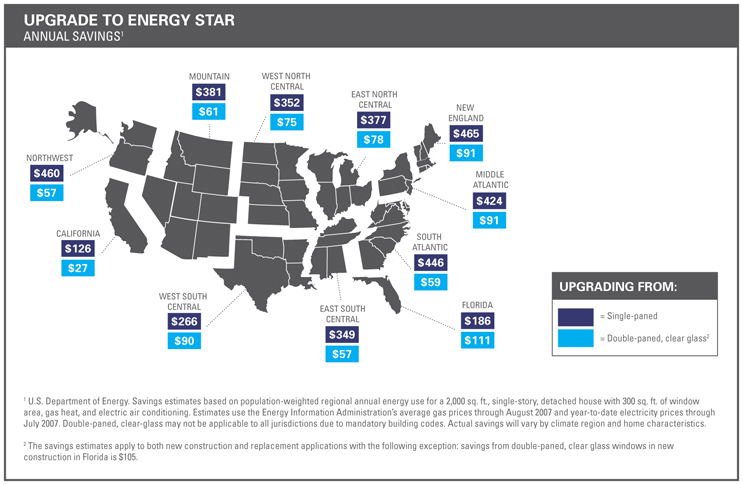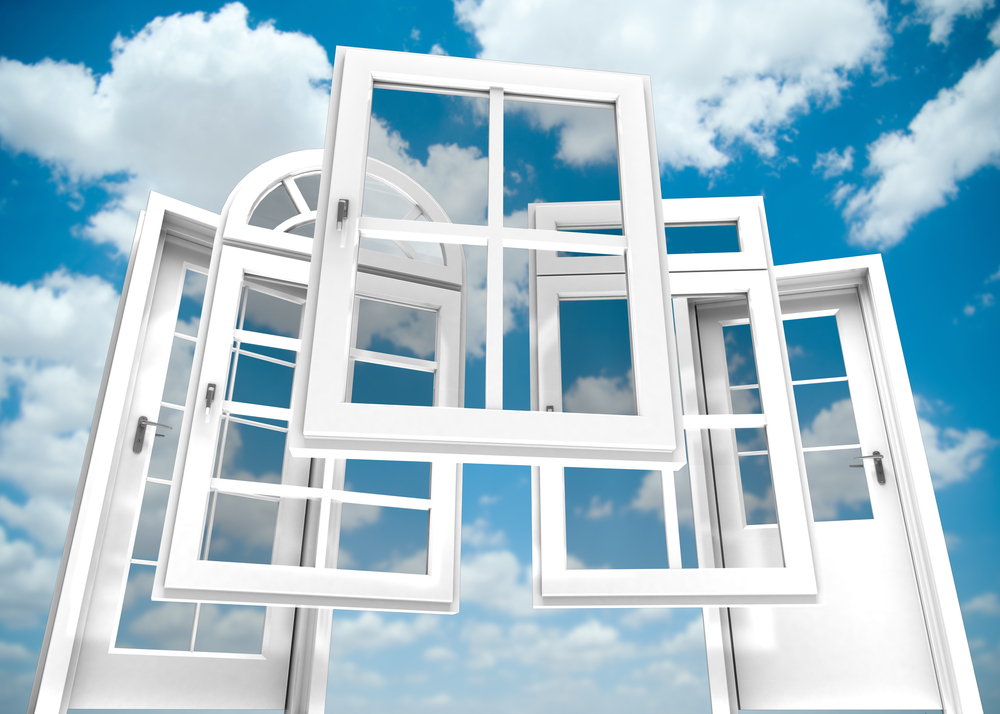Choosing Energy Efficient Windows for Your Home – Is It Worth It?
Windows may enhance the look of your home, but there is a price to pay for beautiful backyard views. According to the Department of Energy (DOE), 25 to 30 percent of a home’s heating and cooling is used to combat heat transfer through its windows.1
That’s a significant chunk, but there’s some good news – you can quickly remedy the situation by replacing your current windows with more energy-efficient models.

The Benefits of Energy-Efficient Windows
When it’s time to replace your windows, it is best to get an energy efficient product. The best energy-efficient windows reduce energy loss without compromising the look of your home. Here are just a few ways you can benefit from this investment.
Lower Your Energy Bills
In 2013, the average annual energy bill in the United States was $2,060, with 42 percent going toward heating and cooling.2 Installing brand-new energy-efficient windows can decrease the amount of money you have to spend on that portion of your energy bill. According to the ENERGY STAR® City Savings Estimates, Denver area residents can save $257 annually by replacing their single-pane clear windows, or $91 by replacing their double-pane clear windows, with more energy-efficient models.3 Those savings will quickly add up over the years.
Make Your Home More Comfortable
Is the area by your windows drafty in the winter and unbearably hot in the summer? There’s a chance your window is not sealed correctly or weatherproofed, which allows air to leak between the interior of your house and the outdoors. Energy-efficient windows, especially when experienced replacement window professionals properly seal them, can keep your home comfortable no matter the season.
Reduce Your Carbon Footprint
While there are greener sources of energy like wind, water, and solar power, much of the country’s electricity is still generated by burning coal, natural gas, petroleum and other products that release carbon dioxide into the atmosphere. The U.S. Energy Information Administration (EIA) reports that in 2017, electricity generation was responsible for 1,744 million metric tons of CO2 emissions – about 34 percent of the U.S. total.4
If you choose to replace your windows with energy-efficient windows, your HVAC system won’t need to use as much electricity to maintain your home’s temperature. This can reduce your personal carbon footprint by approximately 246 to 6,205 pounds of CO2 per year, depending on the type of windows you’re replacing and your average energy usage.5
What Makes Windows Energy-Efficient
There are several tricks engineers use to make windows more energy-efficient, including:
- A high-quality frame – Some materials like fiberglass and insulated vinyl outperform others like metal and wood regarding insulation and maintenance.
- The way the window opens – A window that’s fixed or hinged loses less energy than one that slides horizontally or vertically.
- Insulated glass – Double-pane and triple-pane windows have gaps of air or gas, between the panes, that reduces heat transfer.
- Gas – Manufacturers sometimes include a thin layer of argon or krypton gas between panes to reduce heat gain and loss.
- Low-emissivity (low-e) coatings – These metal and metal oxide coatings prevent 30 to 50 percent of energy loss.6
How to Choose a Window
As you’re shopping, you’ll want to check the window’s ENERGY STAR® certification as well as the label provided by the National Fenestration Rating Council® (NFRC). These two organizations are the authorities when it comes to window energy efficiency.
ENERGY STAR-Certified
ENERGY STAR-certified windows must meet specific criteria in each of the four regions of the country:
- Northern Zone
- North-Central Zone
- South-Central Zone
- Southern Zone
You can easily find your zone with this Zone Finder tool. For example, Arapahoe County in Colorado falls within the Northern Zone, so look for the Energy-Star certified windows for that zone or the whole country.
Good Ratings on NFRC Label
The NFRC label tells you what ratings a window has, describing its:
- U-factor – The amount of heat that escapes your window. You want this number to be low, especially in states with cold winters, so the heat stays indoors.
- Solar heat gain coefficient (SHGC) – The amount of heat that enters your house via sunlight. A low SHGC is preferable in hot climates, and vice versa.
- Visible transmittance (VT) – The amount of sunlight a window lets into your home. The desired rating depends on how bright you want your home to be.
- Air leakage – The amount of air that escapes through gaps in the window. You want a low air leakage rating.
So, are replacement windows a good investment?
We at Gravina’s Window Center of Littleton have been outfitting residents’ homes with high-quality windows since 1973. Our takeaway is that it is worth the investment to replace your windows if they are old and underperforming. For this reason, if we are going to replace a homeowners windows, we only carry the best – Infinity® from Marvin Replacement Windows. They are truly energy-efficient because they:
- Are made of Ultrex® fiberglass that is eight times stronger than vinyl8
- Have a low expansion rate for a tighter seal
- Include low-E coatings to reduce heat transfer
- Are built and backed by Marvin Windows and Doors
If you’re interested in more information about energy efficient windows, call us at (303) 794-0490 to schedule your consultation!
1https://www.energy.gov/energysaver/design/windows-doors-and-skylights/update-or-replace-windows
2https://www.energystar.gov/products/ask-the-expert/breaking-down-the-typical-utility-bill
3https://www.energystar.gov/sites/default/files/asset/document/ES_CitySavings_09DEC15.pdf
4https://www.eia.gov/tools/faqs/faq.php?id=77&t=11
5https://www.energystar.gov/products/building_products/residential_windows_doors_and_skylights/benefits
6 https://www.energy.gov/energysaver/window-types-and-technologies
7https://www.energystar.gov/products/building_products/residential_windows_doors_and_skylights/key_product_criteria
8https://www.marvin.com/infinity/features/ultrex-fiberglass?menu=strength


1 Comment
[…] Repair, and Painting Program is a federal regulatoryprogram affecting general contractors, window companies, painters, property managers, and others who disturb painted surfaces. Hiring a contractor that is […]
Recent Posts